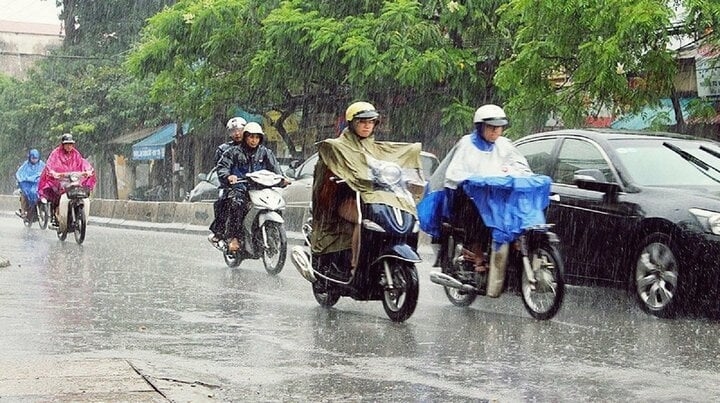How do you brake safely in rainy weather, on slippery roads?
Brake early
Braking efficiency on wet roads is reduced by half compared to dry conditions, so it’s important to maintain a defensive driving style and increase your following distance. Anticipate potential hazards and gently apply the brakes to slow down.

Practicing braking techniques in rainy conditions is a crucial skill. (Illustrative image)
Gradually increase braking force
If a hazardous situation arises, be prepared to brake more firmly and decisively to bring the vehicle to a quicker stop.
Use both brakes
Rather than relying solely on the front or rear brake, it’s essential to use both brakes simultaneously in rainy conditions. This reduces the risk of skidding or losing control of the vehicle.
Brake and steer with flexibility
Maintain a straight steering position while braking. If you need to steer, release the brake momentarily to maintain balance and control.
According to experts, there are two primary methods of braking: engine braking and using the brake system. Engine braking involves slowing the vehicle down by reducing engine speed, which is achieved by releasing the accelerator pedal. This method allows for gradual deceleration and better vehicle control.
The technique for engine braking is straightforward. For manual transmission vehicles, simply release the accelerator and engage the appropriate gear for the current speed. This will lower the engine RPM and slow the vehicle.
The brake system approach involves using the foot brake to engage the rear brakes and the hand brake for the front brakes in manual transmission vehicles. For scooters, the left hand controls the rear brake, while the right hand controls the front brake. Some vehicles may also have a combined braking system.
Many people, especially women, tend to rely predominantly on the front brake. However, sudden or excessive force on the front brake can cause the wheel to lock up, leading to a loss of control and a potential skid.
Some may argue that the rear brake is safer. However, abruptly applying the rear brake (in manual transmission vehicles) or abruptly squeezing the rear brake lever (in scooters) can also cause the wheel to lock up, resulting in a skid and the vehicle fishtailing.
Therefore, in rainy and slippery conditions, experts recommend using both brakes simultaneously, gradually increasing the braking force. It’s also advisable to start braking earlier than usual. In an emergency, try to keep the steering straight, and if you need to steer, release the brake momentarily. On muddy roads, reduce speed, avoid hard braking, and follow the vehicle ahead at a safe distance.
Source: VTC news
How to Use Your Air Conditioner During Rainy Days to Dehumidify and Save Energy?
“With the rainy season upon us, many homeowners are wondering about the most efficient air-conditioning setting to combat the humidity while keeping their energy costs low. It’s a common dilemma, and we’re here to shed some light on this very issue. Read on to discover the secrets to a comfortable and cost-effective indoor environment during the rainy season.”


































